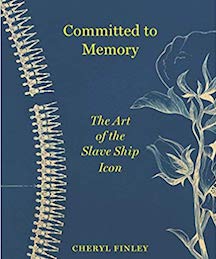 Cheryl Finley, professor of art history at Cornell University, has published a new book called Committed to Memory: The Art of the Slave Ship Icon (Princeton University Press, 2018), that provides a new look at the influence of the 18th-century slave ship and how it became a symbol of Black resistance, identity, and remembrance.
Cheryl Finley, professor of art history at Cornell University, has published a new book called Committed to Memory: The Art of the Slave Ship Icon (Princeton University Press, 2018), that provides a new look at the influence of the 18th-century slave ship and how it became a symbol of Black resistance, identity, and remembrance.
The original wood engraving of a slave ship was created in 1788 by British abolitionists who intended to influence the legislators who regulated slave ships. It depicts the human cargo hold of a slave ship with a description of how much space each person was allotted, how they were separated by sex, and how male slaves were shackled during the one to two month voyage across the Atlantic Ocean. It also contained an appeal for everyone who read it to support the abolition of slavery.
Dr. Finley states that “it was the first image to expose people to the barbarism of the trans-Atlantic slave trade, showing its high level of violence in the way it visualized human suffering.” By the end of the 18th century, the image was easily replicated and over 200,00 copies of the image were in circulation. She suggests that the mass circulation of this image helped to end the trans-Atlantic slave trade, and eventually slavery itself. In the spring, Dr. Finley will teach an undergraduate course at Cornell based on her research.
Dr. Finley is a graduate of Wellesley College in Massachusetts. She holds a Ph.D. in African American studies and art history from Yale University.

